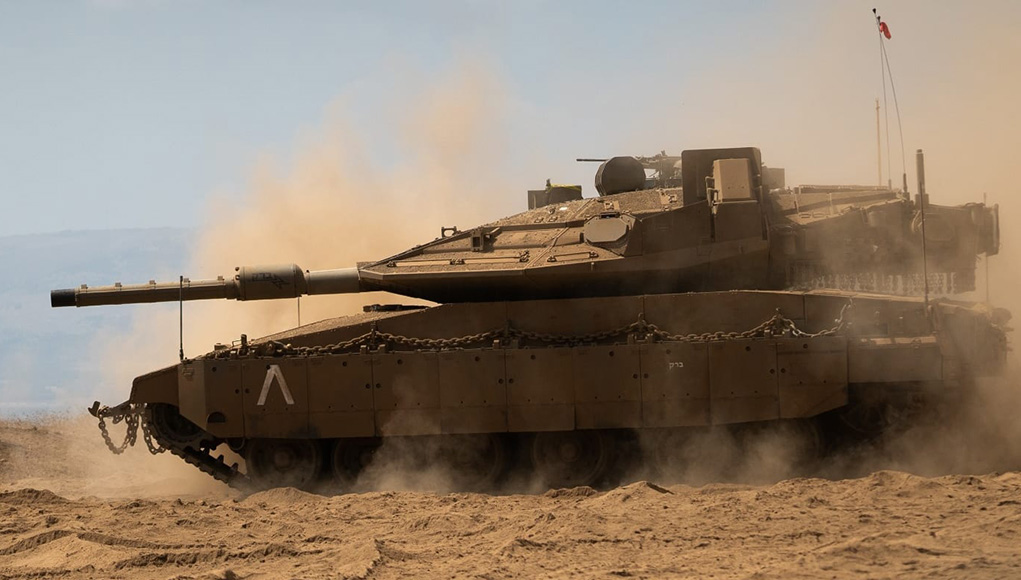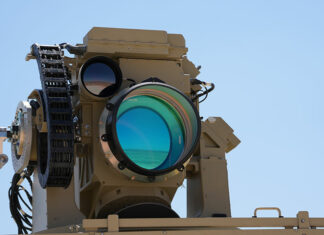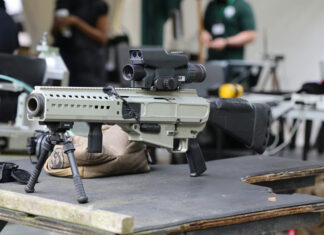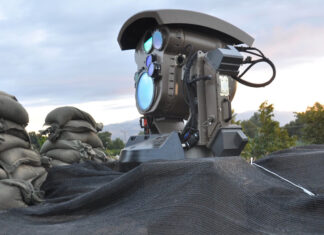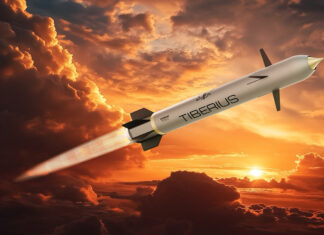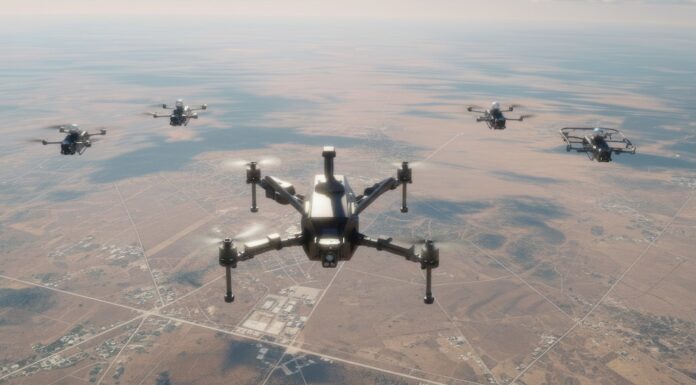The armored vehicle faces an ever-growing array of threats in the unforgiving calculus of modern warfare. Sophisticated anti-tank missiles, smart loitering munitions, Rocket-Propelled Grenades (RPGs), and even simple drones adapted for attack can disable or destroy heavily armored and costly tanks and infantry carriers. This reality, brought into sharp focus by the intense fighting and heavy vehicle losses seen in conflicts like the one in Ukraine, has propelled Active Protection Systems (APS) from a niche technology to a vital necessity.
Unlike passive armor, which absorbs or deflects an impact, and ‘soft-kill’ APS that uses optical or electronic countermeasures effective primarily against guided missiles, ‘hard-kill’ APS acts as an outer shield, detecting incoming threats and neutralizing them in mid-air at fractions of seconds before they strike. This article tells the story of several leading APS, exploring how they work, what makes them unique, and how they shape the battlefield defenses of today and tomorrow.
Developments of Hard Kill APS began as conceptual studies and technology demonstrations in the late 1990s in Russia, Germany, the US, and Israel. However, these systems did not mature due to their complexity, concerns of collateral damage risk, and the limited protection they could provide. These systems reached full-scale development in the first decade of the 21st century only in Israel, which selected APS to equip Israeli AFVs.

Trophy – The Combat-Hardened APS
Born from the hard lessons of the 2006 Lebanon War, where Israeli Merkava tanks faced unexpected vulnerability, Rafael’s Trophy system emerged as a pioneering solution to protect Armored Fighting Vehicles (AFV) actively. Its first combat experience came in 2011, and since then, it has built an unmatched reputation through extensive operational use, proving its mettle in numerous engagements in the ongoing conflicts in Gaza and South Lebanon.
Trophy operates with four radar panels that constantly scan the surroundings. When a threat—be it an RPG or an Anti-Tank Guided Missile (ATGM)—is detected and deemed hostile, the system reacts instantly. One of its two rotating interceptors snaps toward the threat and fires a volley of small, Explosively Formed Projectiles (EFP). This intercept is a focused countermeasure designed to hit the incoming warhead or its fuzing mechanism directly, neutralizing it safely away from the vehicle, with minimal risk to dismounted soldiers nearby. Recognizing the evolving battlefield, Rafael has adapted Trophy to counter drone threats and top-attack missiles, ensuring this Trophy remains relevant against the most modern threats.
Its success has led to widespread adoption beyond Israel; American Abrams tanks, in partnership with Leonardo DRS. British Challenger 3s, and Germany’s newest Leopard 2A8s are all receiving its protection, with European needs handled by the EuroTrophy consortium formed by Rafael, GDELS and KNDS. Recent moves, like a 2025 agreement to explore production in India via L&T, show its continued global significance.
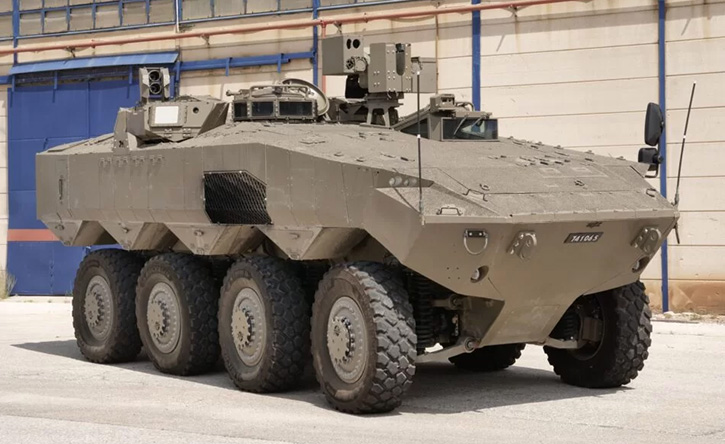
Iron Fist – The Flexible Defender
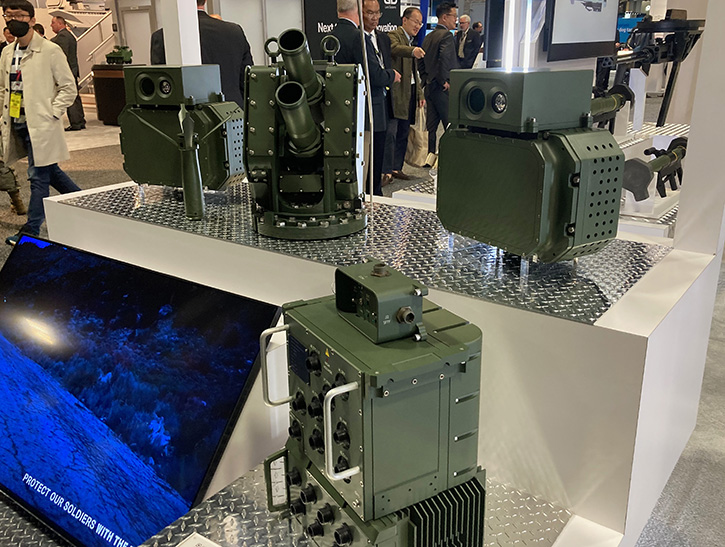
Elbit Systems’ Iron Fist offers a different approach to the active protection of AFVs. It is a family of systems originally developed by IMI in parallel to the Trophy. Iron Fist is adaptable to vehicles ranging from lighter troop carriers to heavy tanks. Like Trophy, it uses radar and optical sensors to perceive incoming threats. However, its primary defense mechanism differs. Instead of aiming for a direct hit, Iron Fist’s trainable launchers fire an explosive interceptor that detonates near the incoming missile or rocket. The resulting shockwave is designed to knock the projectile off course, damage its aerodynamics, or prematurely detonate its warhead, all while minimizing the spray of lethal fragments that could endanger nearby infantry – a crucial consideration in urban warfare or combined arms operations. This operational concept makes it effective against elevated threats, a capability that has been proven in numerous tests.
This makes it an attractive option for vehicles like the Netherlands’ CV90 IFVs and Israel’s own Eitan APC and D9 bulldozers. It has also been selected for the South Korean Redback IFV developed for Australia. For heavier threats, the Iron Fist tackles the formidable challenge of high-speed kinetic energy (KE) penetrators – the Armor armor-piercing fin-stabilized Discarding Sabot (APFSDS) or ‘long rod’ darts fired by other tanks – by attempting to disrupt their stable flight path before the impact. After resolving some initial issues with power and integration, the US Army is fielding the system on its Bradley fighting vehicles in 2025, highlighting its counter-drone capabilities as well. A soft-kill laser jammer can also be integrated into the system.
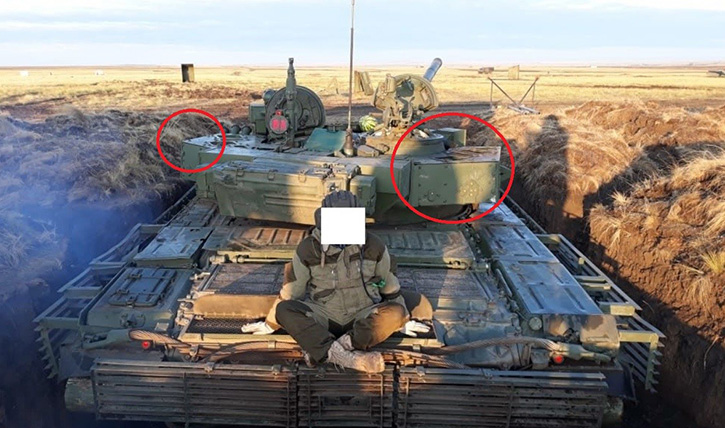
Arena-M – Russia’s Answer to Direct and Top Attack
The brutal realities of the Ukraine conflict forced Russia to reassess its vehicle protection strategies. Older APS like Drozd or the new Afganit (seen on the T-14 Armata) proved inadequate against the top-attack missiles, which strike tanks where their armor is typically weakest. Enter Arena-M, developed by KBM. Selected in 2024 specifically to counter these modern threats, Arena-M takes a different architectural path as it primarily utilizes external modules that are easier to fit into different armored vehicles.
Instead of rotating launchers, it employs numerous containers arranged around the turret. These house directional fragmentation charges. When the system’s radars detect an incoming threat coming horizontally or from above, one of the charges ejects from the optimally placed container, creating a precisely aimed curtain of high-velocity fragments about six meters from the tank. The goal is to shred the incoming missile or drone before it hits. Tested against captured Western weapons like Javelins and NLAWs, Russia is now actively deploying Arena-M, with systems appearing on T-72B3M tanks in Ukraine. Models of the system were showcased at the IDEX 2025 defense exhibition in the UAE. While its battlefield effectiveness is still being assessed, its design clearly reflects Moscow’s urgent need to counter the top-attack threat that has plagued its armored forces.
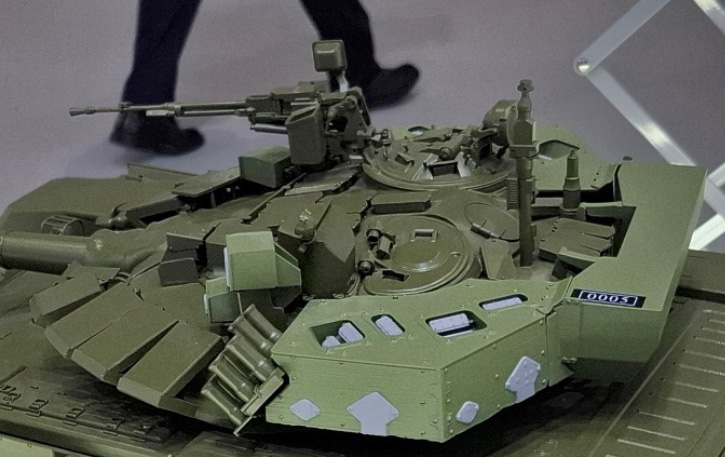
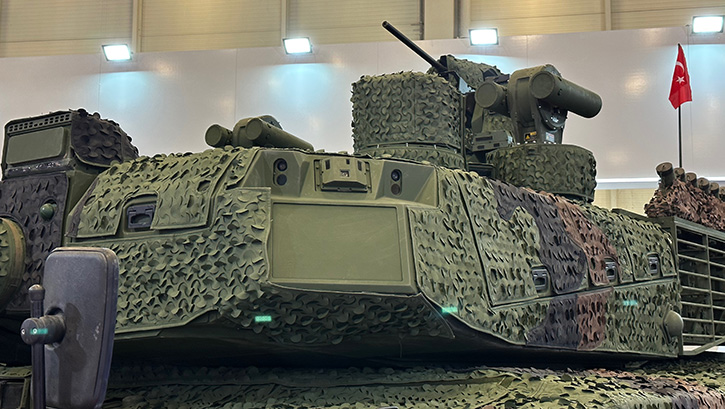
AKKOR – Turkey’s APS Approach
Developed by Turkey’s defense giant Aselsan, AKKOR reflects a national drive for self-sufficiency in critical defense technologies. Architecturally resembling systems like Iron Fist with its trainable launchers guided by Aselsan radar and IR sensors, AKKOR distinguishes itself through its choice of countermeasures that include soft and hard kill. This design choice prioritizes minimizing collateral damage – a key consideration for urban operations. AKKOR has undergone extensive testing against various threats (including Kornet ATGMs) and is slated for deployment on Turkey’s indigenous Altay main battle tank starting in 2025, as well as being retrofitted onto upgraded Turkish Leopard 2A4s. Its current configuration offers some capability against shallow-angle aerial attacks and drones, reflecting an awareness of these growing threats.

PULAT – A Shield for Close-Quarters
Sometimes, operational needs demand immediate solutions. For Turkey, facing combat losses in Syria and while awaiting the full maturation of AKKOR, that solution came in the form of PULAT. Developed in cooperation with Ukrainian expertise and based on their Zaslon-L system, PULAT is a distinctly “close-in” defense.
It consists of several self-contained modules mounted around the vehicle. When activated, these modules, each containing a small radar and a cylindrical fragmentation warhead, stand ready for action, protruding slightly from the tank’s passive armor outline. If a threat is detected as it gets dangerously close, the module’s radar triggers its warhead, creating a localized sphere of fragments designed to neutralize the threat just meters from the hull.
Deployed since 2018 on upgraded Turkish M-60T tanks, PULAT has gained valuable combat experience in Syria and Iraq, proving itself as a robust, reactive layer of last-ditch defense. Its relative simplicity and proven effectiveness have led to wider deployment on Turkish M-60Ts (originally, the Israeli-modified Sabra) and Leopard 2A4s. Strangely, there were no reports of Ukrainian army tanks using the Zaslon system despite the extensive modifications performed on existing and imported tanks and the heavy losses suffered from Russian anti-tank missiles, artillery, mines, and drones.

GL-6 – China’s APS Choice
China’s Norinco has also entered the APS arena with systems like the GL-6, an evolution of earlier designs. Like Iron Fist with its trainable launchers, the GL-6 uses a fragment-cloud kill mechanism. The system integrates four radar panels for detection and two interceptor launchers, each typically armed with two interceptors. These interceptors are designed to detonate about 10 meters from the vehicle, neutralizing threats like RPGs and ATGMs. A key feature of the GL-6 is the impressive elevation range of its launchers – capable of aiming up to 60-70 degrees. This suggests a strong inherent capability against top attack or diving threats and weaponized drones, surpassing the elevation limits of some other systems. Recent observations in 2025 show that the GL-6 is fitted not just to main battle tanks like the Type 99A but also significantly to lighter platforms like the ZBD-03 airborne infantry fighting vehicle. This indicates a concerted effort by the PLA to extend advanced protection across its forces, including rapid deployment units.
KAPS – South Korea’s Indigenous APS
South Korea began developing its own hard-kill Active Protection System, known as KAPS, in the mid-2000s, led by the Agency for Defense Development (ADD) and Hanwha Systems. Designed specifically for the K2 Black Panther main battle tank, KAPS utilizes radar and infrared trackers to identify incoming threats like RPGs and ATGMs out to 150 meters. When a threat closes to within 10-15 meters, one of the system’s two trainable launchers fires a fragmentation grenade to intercept it. The system demonstrated successful tests against RPG-7 and Metis-M missiles back in 2012. However, KAPS wasn’t integrated into the initial batches of K2 tanks entering service around 2014. Concerns about its high cost (estimated at $600,000 per unit then), potential danger to nearby infantry from its fragmentation interceptors, and possible interference with the K2’s existing soft-kill systems led to its deferral. The plan now is to incorporate KAPS into the future K2 Product Improvement Program (PIP) variant. Development work continues, with efforts reported in 2023 to enhance KAPS for urban combat scenarios, including better defense against drones, potentially at a lower cost. While export versions of the K2 often feature other APS solutions (like variants of Trophy), the original KAPS technology remains a national development, recently seen integrated on a prototype N-WAV wheeled armored vehicle in late 2023.
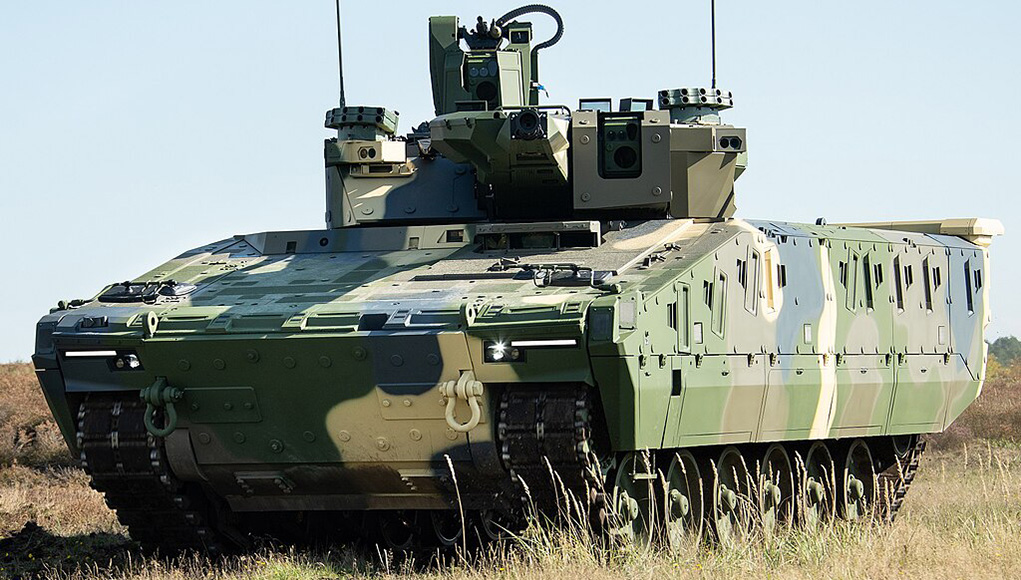
StrikeShield – A Hybrid Defender
Germany’s Rheinmetall offers a distinctly different approach with its StrikeShield APS, the third generation of its Active Defence System (ADS) technology. Rather than relying solely on standalone launchers, StrikeShield embodies a “hybrid” layered protection philosophy, integrating its components directly within modular armor tiles. This means the sensors and countermeasures are sandwiched between layers of passive armor, providing physical protection for the APS components while the APS elements themselves contribute to the overall ballistic integrity.
This distributed system uses low-power radar and optical sensors to detect threats like ATGMs and RPGs. When an engagement occurs, StrikeShield employs a directed energy blast countermeasure very close to the vehicle (within about 10 meters) to neutralize the incoming projectile before impact. A key advantage of this design is its extremely low electromagnetic signature due to the low-power radar, making the protected vehicle much harder for adversaries to detect electronically. Rheinmetall also stated StrikeShield addresses the challenge of defeating high-speed kinetic energy penetrators, having successfully demonstrated this concept in testing. This advanced system achieved a major success in 2021 when Hungary selected it to equip its entire fleet of 209 new Lynx KF41 infantry fighting vehicles, integrating it into the vehicle’s innovative hybrid armor tiles. The US Army has also subjected StrikeShield to extensive testing, evaluating its potential for future American armored vehicles.
India – Charting its Own APS Course
India, with its vast armored fleet, is actively pursuing APS capabilities through a dual-track approach. The Defence Research and Development Organisation (DRDO) lays the groundwork for an indigenous system. At the Aero India show in 2025, DRDO showcased developmental components, including advanced radar panels designed for long-range (4km) detection of small, stealthy targets like drones and ATGMs, aiming for near-hemispheric coverage with multiple panels. They also work on trainable launchers (4 interceptors each) for 20-50m intercepts. A full indigenous system is anticipated by the end of the decade. Simultaneously, recognizing immediate needs, India issued a formal request in early February 2025 seeking off-the-shelf APS solutions for its T-90S ‘Bhishma’ tanks. This request specifically highlighted the need to counterattack drones and loitering munitions, reflecting global threat trends. This follows earlier stalled efforts to acquire Russia’s Arena-E.
Conclusion
These diverse Active Protection Systems illustrate the recent evolution in armored warfare. From the combat-proven reliability of Trophy to the flexible defense of Iron Fist, the top-attack focus of Arena-M, the integrated hybrid approach of StrikeShield, the low-collateral design of AKKOR, the close-in shield of PULAT, the high-elevation reach of GL-6, each system reflects different requirements, technological choices, and operational priorities. What unites them is the recognition that passive armor alone is no longer sufficient. As threats become faster, smarter, and attack from multiple vectors, sophisticated, multi-layered defenses incorporating APS are essential. The ongoing integration of artificial intelligence, improved sensors, and potentially new kill mechanisms like directed energy promises even more capable shields in the future, ensuring that armored vehicles can continue to play their decisive role on the battlefield.


